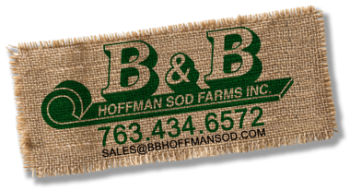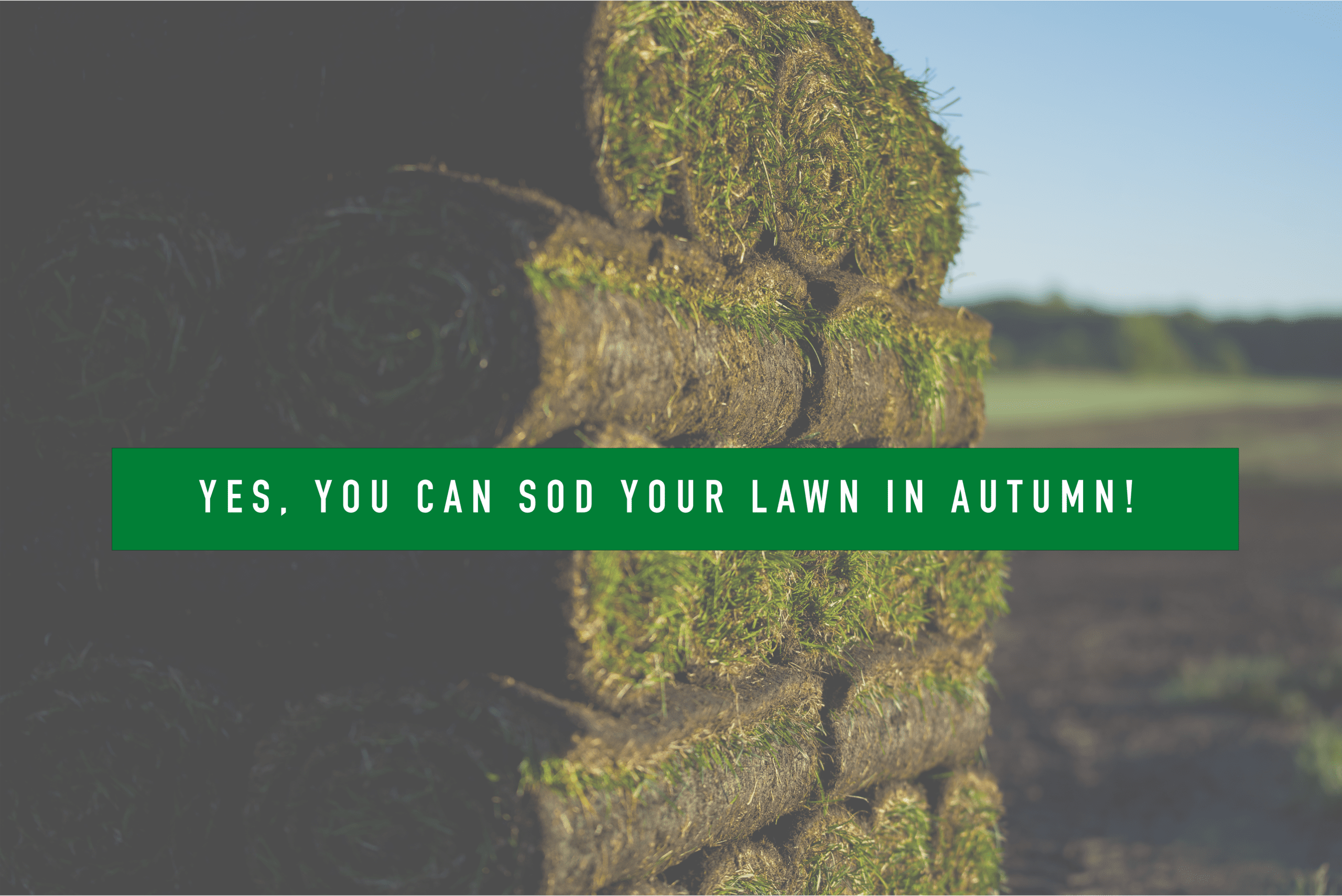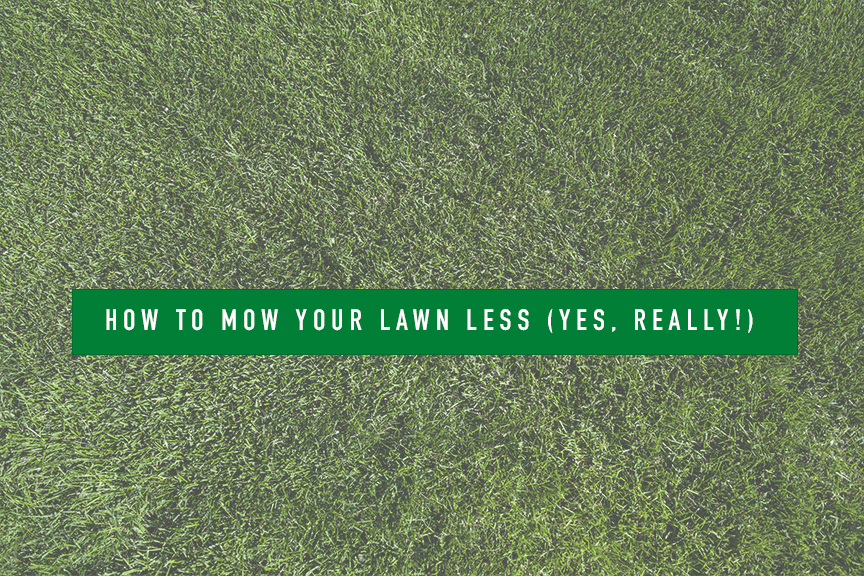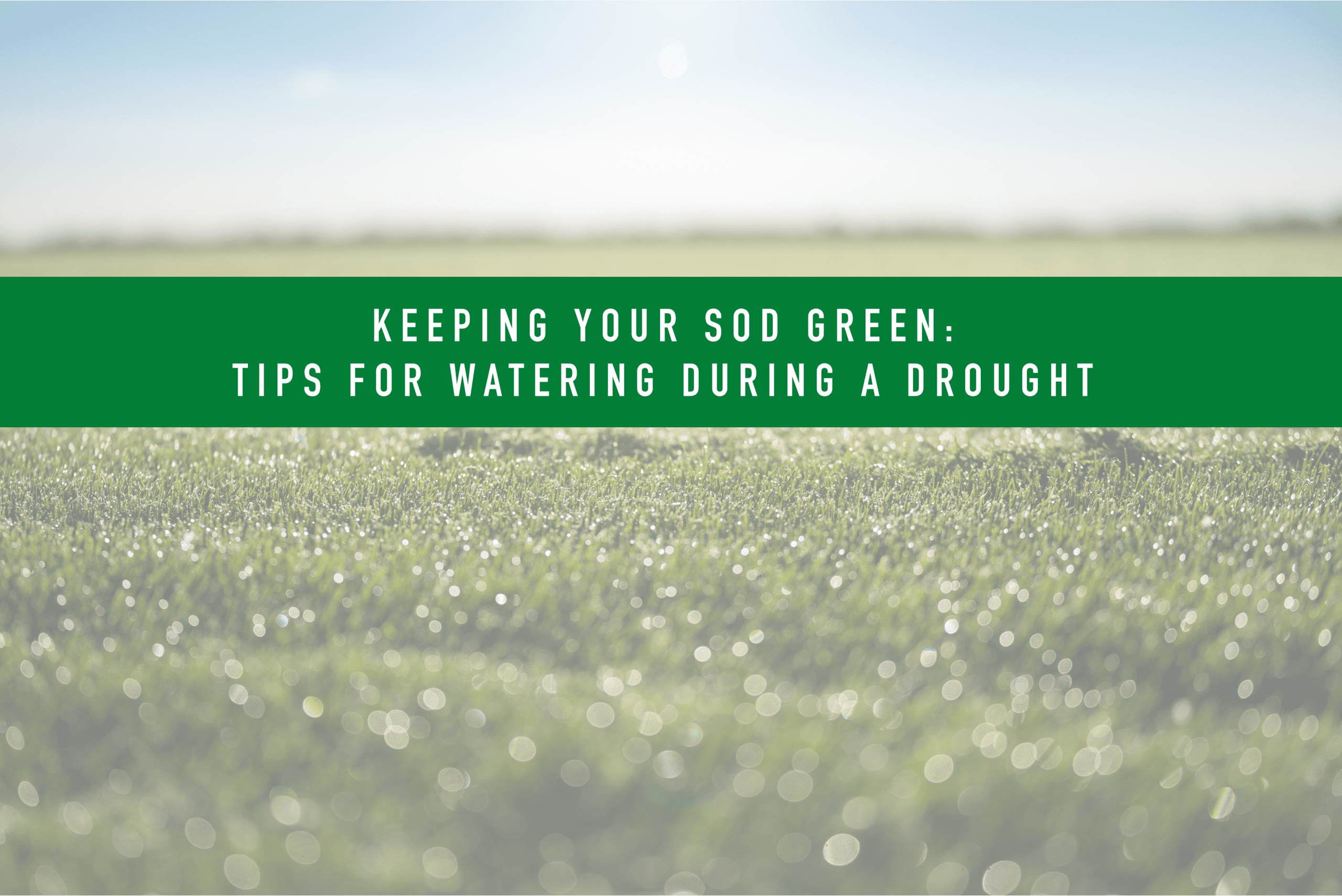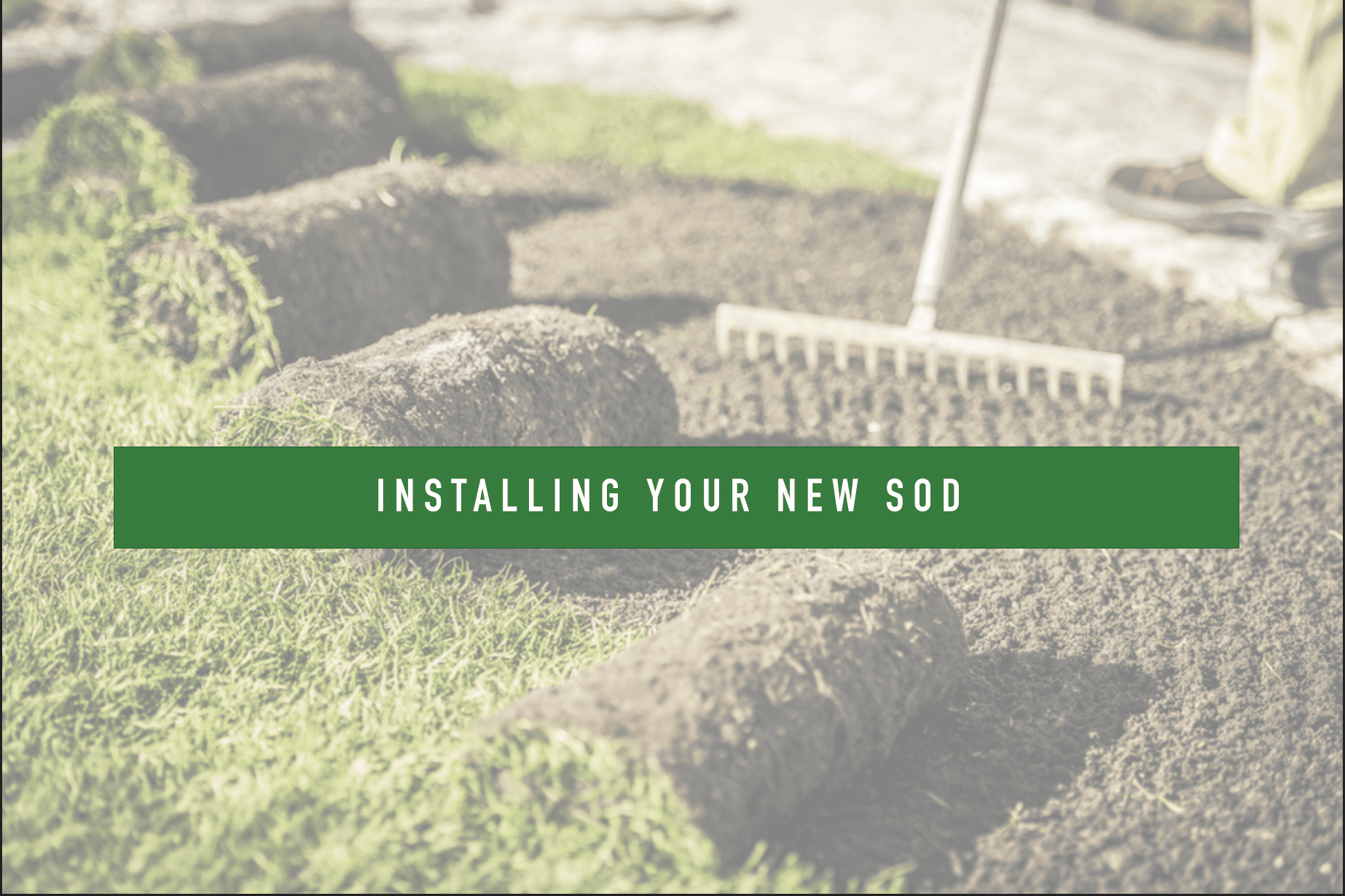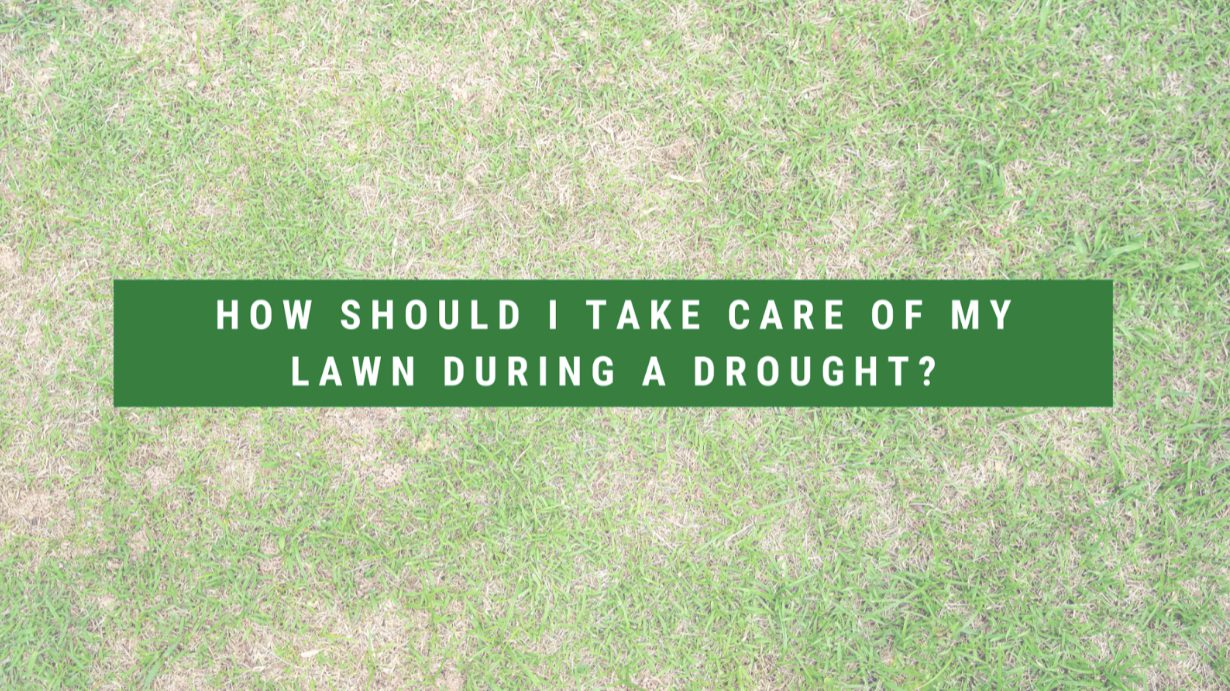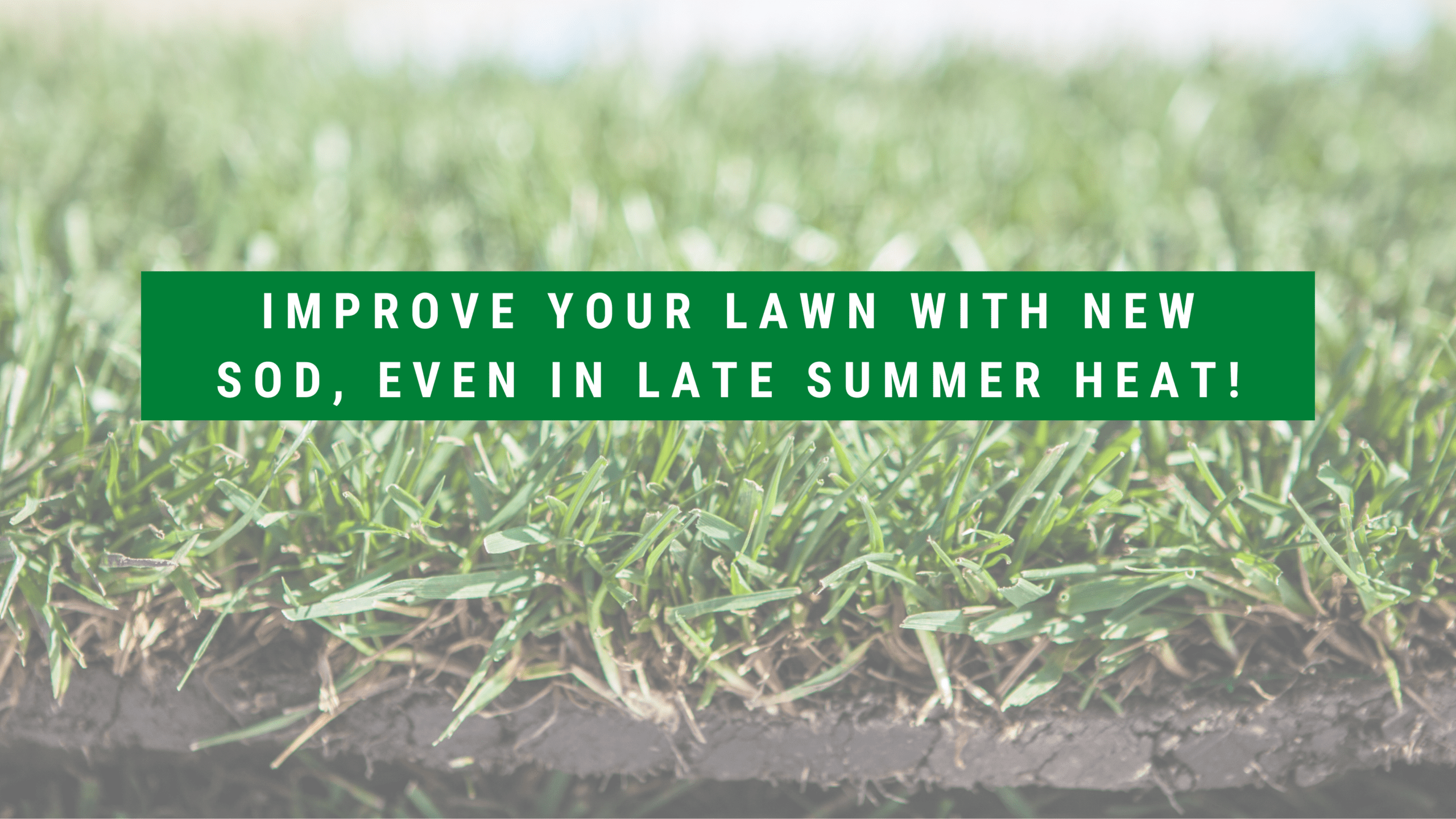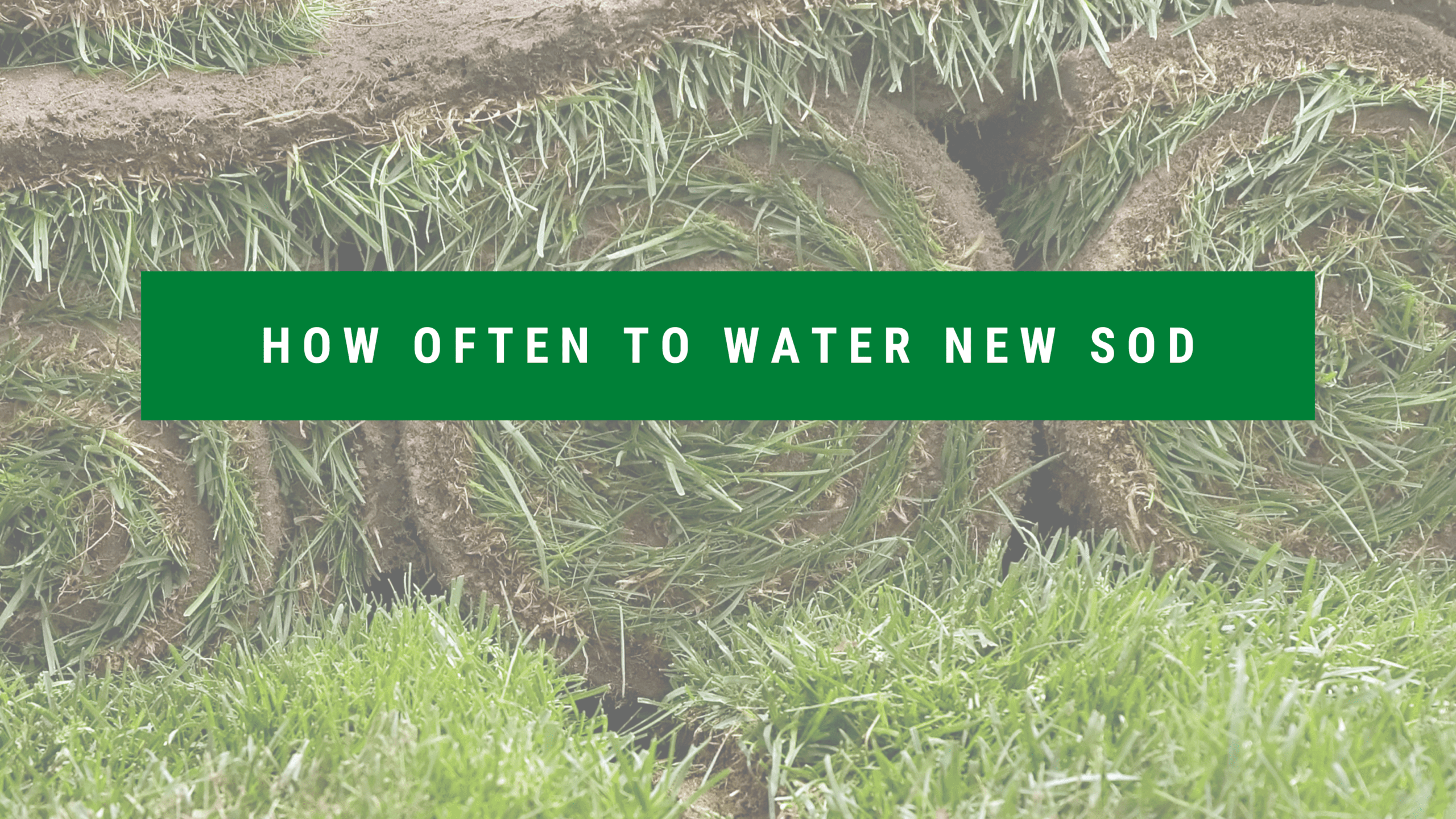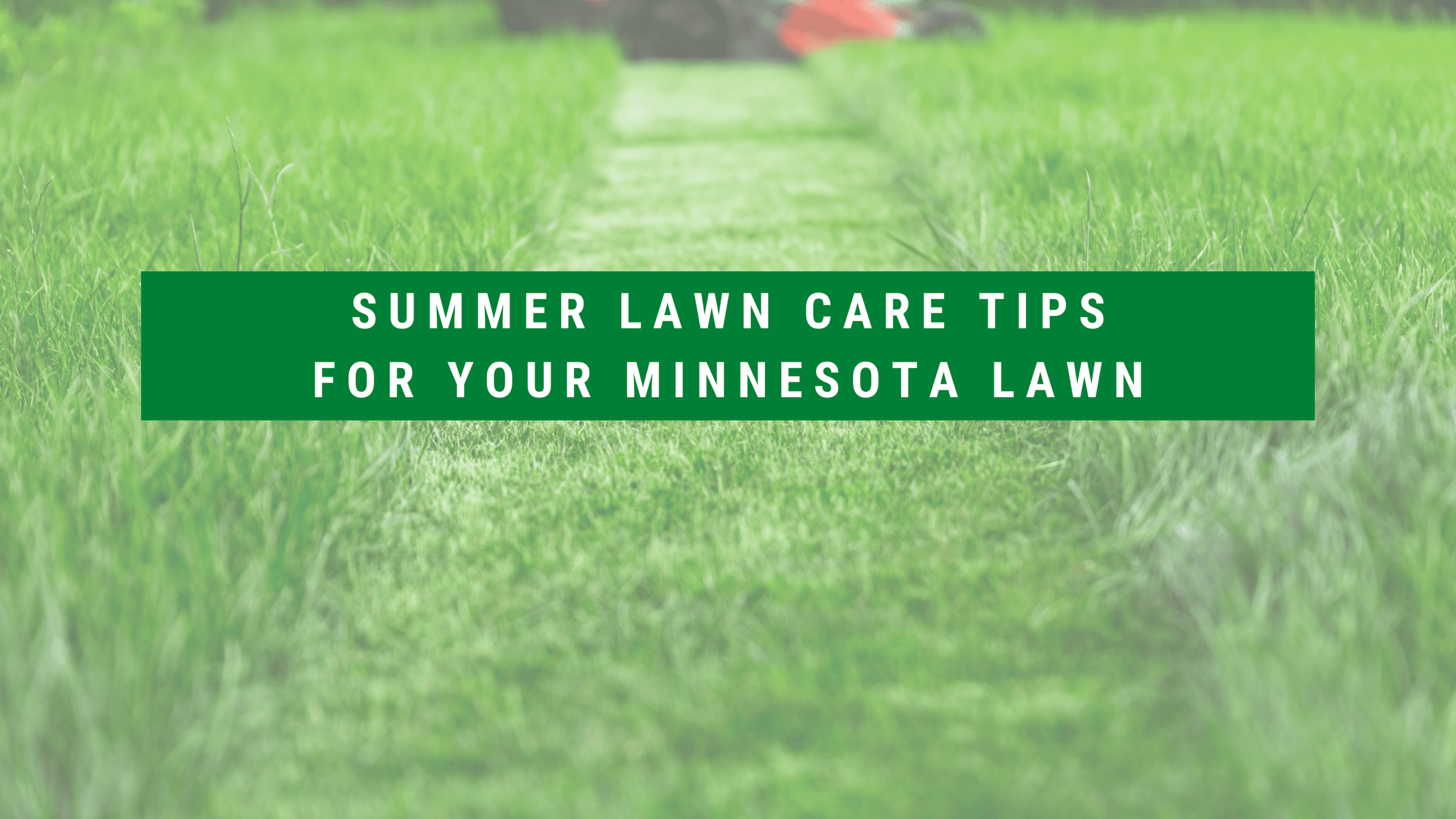Most people think that it’s too late to sod in autumn. B&B Hoffman Sod is here to tell you to why fall is actually a great time of year to sod your lawn.
Continue readingHow to Mow Your Lawn Less (Yes, Really!)
Summer brings beautiful weather, fun outdoor activities, and… yardwork! Are you tired of spending your limited summer free time mowing your lawn instead of sitting by a pool or enjoying lunch on a patio with friends? Maybe you have kids in sports that take most of your free time and your lawn looks overgrown. We have some good news for you: Being smart about yard care can help you maintain a beautiful, healthy lawn with less effort. B&B Hoffman Sod has put together a guide to help you spend less time mowing and more time enjoying your summer!
 Choose the Right Grass Variety
Choose the Right Grass Variety
Selecting a grass type that is well-suited to your climate can reduce the amount of mowing required. B&B Hoffman Sod’s premium Kentucky Bluegrass is an ideal choice for our erratic Midwest climate!
Mow High
Keeping your lawn mower blades set higher (around 3 inches) allows the grass to grow thicker, which shades the soil and reduces weed growth. Taller grass also holds moisture better, reducing the need for frequent mowing.
Use a Mulching Mower
Mulching mowers produce clippings that decompose quickly and return nutrients to the soil. This reduces the amount of waste to dispose of and helps your lawn grow more heartily – potentially reducing the need for frequent mowing.
Regular Aeration
Aerating your lawn helps to alleviate soil compaction, improve water and nutrient absorption, and encourage deeper root growth. Healthier grass can grow more evenly and require less frequent mowing.
Water Wisely
Watering deeply and less frequently encourages deeper root growth and a more resilient lawn. Shallow watering can lead to shallow roots and a lawn that grows more quickly and needs more frequent mowing.
Fertilize Right
Fertilizing your lawn is a must, but did you know that over-fertilizing can lead to rapid growth and more mowing? Use a fertilizer with slow-release nutrients to keep growth steady and manageable.
Watch the Weather
Avoid watering during the hottest parts of the day to minimize evaporation. High temps also make it hard for your lawn to absorb the nutrients in the fertilizer so save the 90º days for the pool, not for fertilizing your lawn.
Following these tips can help you maintain a beautiful, healthy lawn with less effort. If you decide you still don’t want to spend the few free hours you have out in the yard, there’s no shame in outsourcing! Hire a lawn care service, find an entrepreneurial teenaged neighbor, or invest in a robotic lawn mower to minimize your time doing yardwork and maximize your time doing something fun.
If your lawn is looking patchy and bare call 763-434-6572 or email sales@bbhoffmansod.com to see how our premium Kentucky Bluegrass seed or sod can make all the difference in your yard!
Keeping Your Sod Green: Tips for Watering During a Drought
Keeping Your Sod Green: Tips for Watering During a Drought
Despite a rainy start to our summer, the weather is finally heating up. While we may have a surplus of water now, Minnesotans know the weather can change on a dime, and a heat wave can change things quickly. In times of drought, maintaining a lush, green lawn can be a challenge, especially when it comes to newly laid sod. Proper watering is crucial to ensure the health and establishment of your sod, even in dry conditions. Let the experts at B&B Hoffman Sod help you navigate watering your sod during a drought.
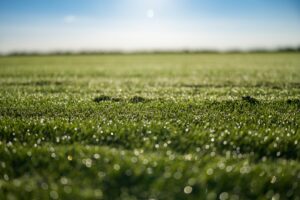
Water Deeply and Infrequently
Instead of light, frequent watering, which encourages shallow root growth, water your sod deeply and less frequently. This encourages the roots to grow deeper into the soil, where moisture is more consistent. Aim to provide at least 1 inch of water per week, either through rainfall or irrigation.
Timing is Everything
Water your sod in the early morning hours to minimize water loss due to evaporation. This allows the soil to absorb moisture more effectively and ensures that the sod has access to water throughout the day. Avoid watering during the hottest parts of the day, as this can lead to water loss and may stress the sod further.
Consider Water Restrictions and Use Proper Irrigation Techniques
To adhere to local water restrictions or guidelines during drought conditions, make the most of any rainfall and use water-saving irrigation techniques to minimize waste. If using a sprinkler system:
- Ensure it is calibrated to water evenly across the entire area of sod.
- Adjust sprinkler heads to avoid runoff and ensure water penetrates the soil effectively.
Monitor Soil Moisture
Regularly check the soil moisture level to determine when your sod needs water. Use a soil moisture meter or simply insert a screwdriver into the soil to gauge moisture depth. Ideally, the top 4-6 inches of soil should remain consistently moist but not waterlogged.
Protect Your Investment
Remember, investing time and effort into watering your sod during a drought pays off in the long run. Properly established sod not only enhances the beauty of your landscape but also provides numerous environmental benefits, such as reducing erosion and capturing carbon dioxide.
By understanding your sod’s needs, implementing proper watering techniques, and considering water conservation strategies, you can help ensure its health and longevity even in the dryest of weather conditions. For more tips on caring for your lawn or assistance with installing our premium Kentucky Bluegrass sod, reach out to B&B Hoffman Sod by calling (763) 434-6572 or visiting our website. We’re here to support you in creating and maintaining a vibrant, healthy lawn year-round.
Get Your Yard Ready To Host Summer Events!
Minnesota summers are perfect for hosting outdoor gatherings like weddings, graduation parties, birthday parties, and family reunions. When you host an event in your backyard, it becomes the backdrop where memories are created and treasured. If your lawn is looking patchy or bare, laying sod is a great way to quickly establish a lush, green backdrop for an outdoor event. If you’re unsure about when you should start or what you need to do to get your lawn ready, B&B Hoffman Sod is here to help make your yard the ideal backdrop for hosting. Here are the most important things to consider for making your outdoor space the best it can be on the big day:
 Timing
Timing
Ideally, you should lay sod at least 2-3 weeks before the event. Allowing enough time before your gathering allows the sod roots to establish themselves in the soil, giving it a better chance to withstand foot traffic and activities during the event.
 Preparation
Preparation
Before laying sod, prepare the soil thoroughly by leveling it, removing any debris, and adding any necessary soil amendments or fertilizers. Ensure the soil is moist but not overly soggy.
 Weather
Weather
Aim to lay sod during mild weather conditions, typically in spring or early fall when temperatures are cooler. Avoid laying sod during extreme heat or cold, as these conditions can stress the sod and affect its establishment.
 Watering
Watering
Immediately after laying sod, it’s crucial to water it thoroughly to help it settle and initiate root growth. Keep the sod consistently moist in the following weeks, adjusting watering frequency based on weather conditions.
 Mowing and Maintenance
Mowing and Maintenance
Avoid cutting more than one-third of the grass blade at a time to prevent stress on the newly established sod.
 High-Traffic Areas
High-Traffic Areas
If possible, restrict heavy foot traffic on newly laid sod until it has firmly rooted into the soil. Consider using temporary pathways or stepping stones to minimize damage in high-traffic areas.
If you’re planning to host an outdoor event and unsure about the timing or process of laying your sod, reach out to us at B&B Hoffman Sod Farms! We can provide the guidance you need to ensure your lawn is perfect for your event. Our beautiful Kentucky Blue Grass and expert knowledge will make your lawn a stunning backdrop for your special occasion.
Installing Your New Sod
Congratulations! You decided to spruce up your yard by laying new sod this spring. The idea of installing your new sod yourself can be overwhelming, and now the rolls of sod have been delivered and you have no idea what to do with them. Don’t worry! B&B Hoffman Sod is here to walk you through the questions that arise during the installation of a beautiful new lawn. These are the most common questions we get about sod installation:
-
How long should I wait to lay my new sod?
Sod must always be laid the same day as delivery.
-
Where should I begin?
Begin laying sod at a straight edge such as a sidewalk, driveway, curb, or string between two stakes. If you’re sodding your entire yard, we recommend working from the backyard to the front.
-
How should I lay the sod?
Stagger the rows as if you were laying bricks with the seams butted together tightly but not overlapping.
-
Is there anything special I should be doing with the sod as I lay it?
Keep the sod moist and prevent it from drying out. Once an area of approximately 200 square feet is installed, begin watering immediately. Keep rotating sprinklers onto freshly laid sod while continuing to install the remainder of your yard. Water enough that it has penetrated through the sod and saturated the dirt underneath, bog-like.
-
My sod looks lumpy – how can I fix it?
If you see lumps in your yard and wish to roll them out, you should do so within the first week. Rolling is not necessary, but it is an option if you feel it would improve the appearance. If you do opt to roll it, rollers can be rented from a local rental store. Be sure your lawn is very damp before you begin and when using the roller, we recommend you pull it along rather than push it.
Now that you’ve laid the new sod, proper care is crucial to keep it looking its best. It may seem obvious, but the most important thing to do is WATER, WATER, WATER!
If you still have questions about installing or caring for new sod, we are always happy to help! Contact B&B Hoffman Sod with any questions you may have to keep your new sod looking as lush as the day we cut it.
Springtime Sod in Minnesota
Minnesotans were lucky to experience a warm and mostly dry winter over the last few months rather than the bitter cold and snow we are used to. Now that spring is here, many of us are realizing that our lawns weren’t as happy as we were with the warmer temps and lack of snow. If your lawn is looking bare or patchy, consider laying new sod or reseeding the bare spots.
If your lawn is only bare in a few small areas, B&B Hoffman Sod Farm has high-quality fertilizer and seed available for our customers. This is the same seed and fertilizer we use on our premium sod fields, so you can be assured that your new grass will look beautiful as it comes in.
Larger bare areas may be harder to seed. Wind, heavy rain, children, and pets can blow away or damage freshly laid seed and fertilizer. If you need to grow large areas of grass, you should skip the seed this spring and contact B&B Hoffman Sod Farm for a quote on high-quality Kentucky Bluegrass Sod. Our sod is bred to be dark green, soft, and durable to withstand harsh climates.
An added bonus to installing sod – freeing up your weekends! Weeds love to grow in areas where grass is thin or sparse. The sod grown at B&B Hoffman Sod Farm is carefully managed, fertilized regularly, and watered as necessary to produce grass that is resistant to weeds. Less weeds = less yardwork time!
Now is the perfect time to seed or sod your lawn. Contact B&B Hoffman Sod Farm to ask about our seed, fertilizer, or sod. Our beautiful grass is available for delivery or pick up, in big and small rolls for any size job.
How Should I Take Care of My Lawn During a Drought?
In general, you should only be watering your lawn when it needs it, but knowing when your lawn needs watering might be difficult!
Grass needs to be watered about 1” to 1½” per week and you shouldn’t water any lawn every day. However, on the days you do, water the sunny spots more frequently than the shaded spots. If the grass is newly planted there will be more watering requirements to assure healthy root development. Make sure you never overwater because it can lead to shallow root systems and can drown new grass shoots, especially during drought season.
Speaking of drought season, here are some methods and remedies that can help your lawn make it through in one piece!
Watering your lawn deeply and infrequently before 10 a.m. is essential to ensure you’re not wasting money away. If you start to see thin or bare patches of dirt, overseeding helps repair these areas. However, if the patch is too far gone reach out to us, B&B Hoffman Sod Farms, for help with sod applications.
Before a drought, begin nourishing your grass with the correct fertilizer so your grass can store up what it needs. Whenever mowing never cut off more than ⅓ of your grass and drought conditions can stunt the growth of your grass, so the rule applies more than ever.
If you have more questions about lawn care during a drought or the products that B&B Hoffman Sod Farms offers, visit us online at bbhoffmansod.com or call 763-434-6572.
Improve your lawn with new sod, even in late summer heat!
If you’ve spent most of the summer trying to get grass seed to sprout, only to have a mud pit in your yard, consider trying sod. Available in multiple sizes, sod is easy to install and maintain, offering a lush, beautiful lawn before the leaves begin to fall.
Preparation. To create a thriving lawn, it is important to first prepare the soil. Loosen the top six to eight inches of soil by raking or tilling, adding any amendments your particular soil may need (such as clay, sand, or peat moss). Level the surface with a rake and grade toward walkways or driveways as needed.
Installation. Sod can be installed anytime, but in August homeowners need to be diligent with watering. If you have the opportunity, lay sod on a cool, overcast day to minimize plant stress. Stagger rolls in a brick-like pattern and place seams together without overlapping.
Water regularly. Moisten the soil to a depth of 4 inches or until you can lift the sod and see that the water has penetrated through and saturated the ground underneath. Remember to water at least once or twice a day for 8 days. After 8 days, the grass will tell you if it needs water by appearing bluish in color. After 8-10 days gently tug at the sod, if you feel a little resistance, then you know the roots are starting to anchor in the soil and it is safe to mow.
Mowing and Maintenance. Mowing stimulates root growth; therefore, you want to mow around the 10 day mark. Ensure your mower is on the highest setting to help evenly distribute the moisture it receives and slow the spread of disease. Consider bagging the clippings the first few times to stimulate further root development. Allow your lawn about a month of growth, then feed it with fertilizer to counteract any nutrients that may have been lost due to heavy watering in the beginning of the process.
Turfgrass sod creates a soft, clean, and safe playing surface for children and pets, provides a great environment for lawn games, and improves family entertaining. Learn more about sod and the products B&B Hoffman Sod Farms offers by visiting us online at bbhoffmansod.com or call 763-434- 6572.
How Often to Water New Sod
As the intense heat of summer starts, be certain you’re tending to your new lawn to ensure that it will flourish going forward. Getting sufficient water onto new sod, and keeping it moist throughout the next few weeks is critical. Below is a breakdown of what your watering schedule should look like.
The day of installation.
As you install your new sod, be sure to have the sprinklers going right away. Start your sprinklers once you have an area installed large enough that you won’t get wet as you continue to lay your new sod. In dry or windy conditions, move your sprinklers often so no area goes too long without water. Be sure to water long enough that when you lift a roll of sod, the water has penetrated through the sod and has saturated the ground underneath…. Bog like.
The next three weeks.
Keep the below-turf soil surface moist with daily (or more) waterings. Your sod is like a wet sponge– it is moist when it’s laid down and if it’s not watered immediately, the sod will shrink which can lead to cracks between each roll. If your sod looks dry or has a bluish look, water immediately! When you water every day it takes less water to keep the sod moist. Plan to water your new sod two to four times each day for the first seven to ten days after it is laid.
Tip one.
Water long enough so that when you step onto the sod it’s squishy, or set a tuna can out by the sprinkler and when it’s filled, move your sprinkler to a new area. If you use a pulsating sprinkler or a sprinkler system, it should take approximately 45 minutes. An oscillating sprinkler will take about one hour.
Tip two.
Water as early in the morning as possible. The morning usually has lower wind speeds and has less loss of water evaporation.
Tip three.
If you have issues with runoff on sloped areas before the soil is adequately moist, turn off the water when runoff begins, wait 30 minutes and restart the watering on the same area.
Tip four.
Make SURE that the areas being watered over-lap. Corners and edges are particularly vulnerable to drying out faster than the center of new sod.
Always monitor your lawn for signs of dryness. If you find there are spots your sprinklers aren’t reaching, use a handheld sprayer to spot-water those areas. Your vigilant work will be worth it when you have a lush green lawn to enjoy for years to come. B&B Hoffman Sod is available to answer any questions at 763-434-6572!
Summer Lawn Care Tips for Your Minnesota Lawn
As Summer is approaching quickly, keep these Minnesota lawn care tips in mind. With a little effort your lawn can be healthy and thriving all summer!
Check out a few of these pointers to keep your lawn looking its best.
Soaking sessions. Most lawns need 1 to 1.5 inches of water every week. Since the rainfall has been sparse, we suggest watering occurs through irrigation, ensuring water soaks 5-6 inches deep into the soil. Watering for a longer duration, less often, is preferred over daily watering. This routine prepares your grass for potential or continued drought and creates a hardier grass cover.
Timing is everything. The most efficient time to water your lawn is in the early morning hours, prior to 9 a.m. At this time, there is the least amount of sunlight and wind, and the lower temperatures allow for equal water distribution. Watering at night is not recommended as the lawn then sits with no sunlight, often causing moss, different types of weeds, algae, and possibly diseases to grow and spread. Always check with local watering restrictions in your area.
Adjust your clipping. Mow your grass to its specified type height, usually around 2 ½ to 3 inches. Taller grass is a natural weed repellent and allows deeper root growth. Shorter grass drys easily, often turning brown and spreading disease.
Fine-tune your tools. To ensure an efficient irrigation routine, make sure all sprinklers are aimed at grass, not pavement or hard surfaces. Repair hoses, fittings, and nozzles as needed to eliminate leakage and save on water waste.
To learn more about summer lawn care and the products that B&B Hoffman Sod Farms offers, visit us online at bbhoffmansod.com or call 763-434-6572.
